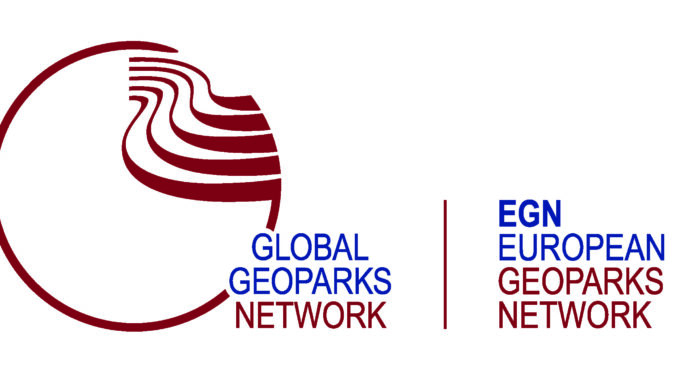The European Geoparks Network (EGN) is seeking to engage a consultant to provide expertise in…

The 8th Truffle Fair will show the best flavours of the Molina-Alto Tajo Geopark
 The VIII Truffle Fair will take place on the morning of Saturday, February 25th, at the cultural centre of San Francisco in Molina de Aragón (Spain) and will bring together producers and restaurants during a day that will be predominantly gastronomic
The VIII Truffle Fair will take place on the morning of Saturday, February 25th, at the cultural centre of San Francisco in Molina de Aragón (Spain) and will bring together producers and restaurants during a day that will be predominantly gastronomic
“The Molina-Alto Tajo Global UNESCO Geopark has to be instrumental in ensuring the whole territory’s future. That is why we are working hand in hand not only with the agri-food producers but also with the business fabric of services to make known their quality” , says Juan Manuel Monasterio, manager of the Molina-Alto Tajo- Geopark. Monasterio remembers that precisely this VIII Truffle Fair “will gather the quality of the black truffle that is collected in our Geopark and the good cuisine of our restaurants”.
The Fair is organized by the Association of Cultivators and Producers of Truffle of Castilla-La Mancha, TRUFARC, the Molina-Alto Tajo Geopark, the Rural Development Association Molina de Aragón-Alto Tajo, Molina City Council and Provincial Council of Guadalajara.
The main event of the fair will be a tasting and competition of “tapas” which will be cooked with truffle by the different restaurants of the Geopark: “We wanted this edition to be predominantly gastronomic, because the best of our product is its aroma and its flavour and we want all those who come to the fair to enjoy them on these dates in which their maturity is optimal”, says Diego García, TRUFARC president.
The geological and climatological characteristics of Molina-Alto Tajo Geopark are ideal to favor the presence in their forests of one of the delicacies most appreciated by the most select palates: Tuber Melanosporum or black truffle. Therefore, this territory was chosen in 2008 to develop a project championed by the Biodiversity Foundation and the General Foundation of the University of Alcalá, with the collaboration of the Castilla-La Mancha Ministry of Agriculture, the Rural Development Association of Molina de Aragon-Alto Tajo and the Association for the Promotion and Development of the Serranía de Cuenca to favor the implantation of its cultivation in the region of Molina de Aragón and Serranía de Cuenca. Fruit of this initiative arose the Truffle Farmers and Recolector Association of Castilla-La Mancha (TRUFARC), based in Molina de Aragón, that today has 86 partners and maintains more than 200 hectares dedicated to this gastronomic delicacy.
“It is the truffle that was traditionally harvested in the area, since it was naturally grown in the forest, but it has also the highest quality in terms of aroma and flavour and all those who decide to come to the fair will check it for themselves “, explains the president of TRUFARC.
The season has not been very good for the black truffle collectors of the Geopark since “it has been a year of scarce natural rains during the summer of 2016, which is when the truffle needs to have moisture to begin to grow,” says Garcia. However, as far as producers are concerned, those who have been able to contribute water to their plantation have performed better.
First results
 The process for obtaining black truffle by this cultivation technique is long. According to estimates of the president of TRUFARC, the time needed for the tree to grow and begin to produce truffle is between 6 to 9 years. Once this happens, production will increase year by year, until it stabilizes: “Many of our partners are in that period in which production is taking off, so we expect that in the coming years the harvest will increase exponentially. Then the young plantations will be mature and we will be able to see the true potential of the zone”.
The process for obtaining black truffle by this cultivation technique is long. According to estimates of the president of TRUFARC, the time needed for the tree to grow and begin to produce truffle is between 6 to 9 years. Once this happens, production will increase year by year, until it stabilizes: “Many of our partners are in that period in which production is taking off, so we expect that in the coming years the harvest will increase exponentially. Then the young plantations will be mature and we will be able to see the true potential of the zone”.
With these first results, after 9 years since the project began, Garcia is optimistic and says that “we can say, without a doubt, that it is a sector with future and it could develop the economies of the regions in which there are plantations, offering job alternatives for young people “.
To this end, the association considers that it is “essential” to carry out a Campaign for the Analysis of Mycorrhizae in order to ensure that “our partners can know exactly the state of their plantations, monitor the presence of invasive species and, in case it may be necessary, make interventions for the improvement of the plantations “.
Once production begins to settle, TRUFARC expects that new companies will be created willing to transform the product to give it added value.



